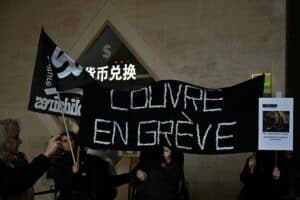The second edition of the RMB Latitudes Art Fair will take place over three days.

Amid the spectacle-driven arena of the contemporary art world, a rising curator strives to educate and ignite dialogue on creative expression from an African perspective.
Visual artist and founding director of FEDE Arthouse, Lebo Kekana, is among the curators selected to showcase his presentation as part of the RMB Latitudes Art Fair’s special projects.
The second iteration of the fair takes place in Johannesburg from 24 to 26 May, featuring over 50 galleries and more than 200 artists.
“It’s definitely a full circle moment,” Kekana told The Citizen in an interview, having attended the inaugural event in 2023.
Kekana established FEDE, a nomadic gallery, in 2020 in response to what he described as “an age-old frustration” stemming from his desire to break into the art scene.
Since its inception, FEDE has endeavoured to create the very spaces that the visual artist envisions for his own work, manifesting through exhibitions in Spain, a showcase centred around vernacular architecture at Decorex Africa and a jazz-music event held in Cape Town.
Latitudes Live talks
For the RMB Latitudes Art Fair, the gallery will present an installation in collaboration with N I S H, a Cape Town-based furniture and design studio.
Kekana has also undertaken the curation of Latitudes Live talks to facilitate critical engagement.
The curator explained that the talks programme in the fair is an opportunity to assess the interplay between the foundational aspects of creative expression on the African continent and the traditional white-wall gallery setting.
Essentially, the talks will delve into the realms of art, design and architecture, utilising exhibition infrastructure as a medium for artistic expression to encourage interaction with attendees.
ALSO READ: Contra Joburg: Reviving the Joburg CBD through art
Kekana recounted how he was taken aback by the architecture of the whimsical venue for the fair, Shepstone Gardens.
“In terms of how we set up the space is very much a sense of making sure people are sensitive to the space. I’m thinking of it in three tiers. So you have got, in the broad sense of the outer space, the landscape that includes the trees, the garden and just the natural world.
“Beneath that you’ve got this architecture, which has its own personality, its own kind of design essence and is already in conversation with the landscape.
“Then within that, which is the last tier, there’s white cube infrastructure… all these white walls that are being put up. That in itself becomes a metaphor for how the white cube, just as an idea exists in Africa,” the curator explained.
He remarked that the fair aimed to cultivate an understanding that the design of the white cube originates from centuries of modernism.
“It is a western idea. It is one that was developed in Europe and America.
“Now from that has come this kind of typical standard template and that template is the standard throughout the world.
“So the question Latitudes Live is trying to pose is how does this template work in Africa? What has been that relationship over the past 100 years? And what is that relationship now?”
READ MORE: The Art of Sales: FNB Art Joburg brings spring feeling to City of Gold
Kekana further elaborated on how objects showcasing creative expression in Africa pre-colonialism were primarily functional in nature.
“They were used in ceremony and gatherings when there were celebrations. They weren’t used as things that are put up simply for observation so they had intention and functionality.
“They cultivated gathering. The fair is trying to cultivate that as well. I think Latitudes, through the talks program, is becoming a place in which to talk about these things.”
The curator previously examined the concept of functionality of “informal” objects by utilising makeshift benches crafted from wood and brick as a means of inquiry.
History of sculpture in Africa
Additionally, this year’s fair will place a significant emphasis on sculptural work.
Highlighting the importance of the practice in Africa, Kekana asserted that sculpture allows people on the continent to understand “our context to history”.
“The oldest form of sculpture or physical object in Sub-Saharan Africa goes back 15 centuries ago, and was found in what is today known as Mpumalanga here in South Africa.
“These are the Lydenburg heads, which are terracotta sculptures. I believe these sculptures relate to the Iron Age in southern Africa.
“I feel that it’s ridiculous that we are not taught such things. I know more about Mona Lisa, and Leonardo da Vinci. The fact that these were found in Mpumalanga blew my mind,” he said.
READ MORE: 19th century South African paintings go up for auction
“So we’re trying to understand that evolution of what the purpose, functioning and intention of sculpture was over the past 15 centuries and what it is now.
“We are trying to understand that through the practice of contemporary artists who work in sculpture placing their work within that history, so that we can better understand evolution.
“There’s a long history behind their work and I think being able to understand the work in that context, gives us a better appreciation of their practice.”
Drawing from his own journey, Kekana, in conclusion, shared his advice for emerging galleries and artists, stressing the importance of self-belief and the execution of ideas.
“If you have an idea and there’s a way to do it, just try to do it. Try not overthink the technicalities, just dive in. I mean it’s risky, but I think for me I found taking calculated risks to be a good thing.
“You have to take a leap of faith and in order to do that you have to believe in yourself so that automatically becomes a prerequisite.”






